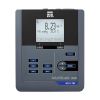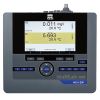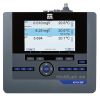YSI IDS ProOBOD Optical BOD Probe
Features
- User-replaceable, low-maintenance sensor cap with 1-year life
- Guarded sensor - the sensor guard provides protection of the sensor tip when taking the BOD probe in and out of BOD bottles
- Self-stirring to provide representative sample and increase response times
- Free ground shipping
- Expedited repair and warranty service
- Lifetime technical support
- More
Overview
The YSI ProOBOD Optical BOD Probe is designed for use with all models of the YSI MultiLab, including the 4010-1W, 4010-2W, and 4010-3W. Optical, luminescent technology eliminates the probe warm-up period and membrane changes. The self-stirring BOD probe has a super quiet lab stirrer that helps ensure a representative sample and improves DO response times.
IDS Intelligent Digital Sensors
The IDS sensors automatically store their unique serial number and calibration data. In addition, they also digitally process the measurement signal. The sensors can be moved from instrument to instrument and maintain their calibration data and transmit this information to the new instrument.
Benefits
- 2-year warranty
- Reliable and serviceable
- Probe body tapered to fit into a standard 300 mL BOD bottle
- Extremely quiet operation
- No warm-up time required
- Self-stirring to provide a representative sample and increase response times
Type: Optical; dynamic luminescence quenching lifetime detection with self-stirring mechanism
Dissolved Oxygen Range: 0 to 50 mgL; 0 to 500% air saturation
Dissolved Oxygen Accuracy: 0 to 20 mg/L, +/-0.1 mg/L or +/-1% of reading, whichever greater; 20 to 50 mg/L, +/-10% reading
Dissolved Oxygen Resolution: 0.01 mg/L; 0.1%
Total Dissolved Solids: 0 to 1,999 mg/L; 0.0 to 199.9 g/L +/-0.5% of value
Temperature Range: Ambient 10 to 40ºC (50 to 104ºF); Compensation mg/L -5 to 50ºC (23 to 104ºF) (extrapolates beyond 45ºC)
Temperature Accuracy: +/-0.2ºC
Temperature Resolution: 0.1ºC
Typical Response Time: 95% in 22 seconds with stirring; 95% in 40 seconds without stirring
Warranty: 2 years; 1 year DO sensor cap
In The News
Safeguarding Communities with Real-Time Flood Monitoring in the City of Hazelwood
The City of Hazelwood is a suburb in St. Louis County, Missouri, home to around 25,500 people. Recently, the community has suffered increased flash flooding following severe storms, prompting the need for the installation of a flood monitoring system. In 2022, a NexSens X2 data logger was installed to monitor water level and rainfall in real-time, with the aim of reducing the loss of life and property as a result of extreme weather events. [caption id="attachment_39411" align="alignnone" width="940"] The latest flood event at Coldwater Creek, where the water level rose by 14 feet, exceeding the height of the X2 by three feet. The sensor can be seen behind the wall that usually contains the Creek.
Read MoreSave our Bogs! Culture, Conservation and Climate Action in Ireland’s Peatlands
Characterized by long-term accumulation under waterlogged conditions, peatlands exist on every continent and account for 3-4% of the global land surface . Small but mighty, these often overlooked wetland environments are estimated to hold as much as one-third of the world's organic carbon in their soil—twice the amount found in the entirety of the Earth's forest biomass. While healthy peatlands can trap and store carbon, regulate water, and provide important habitats for rare species, human alteration has disturbed peatland carbon and nitrogen cycles on a global scale. Approximately 12% of the world’s peatlands have been drained and degraded through conversion for agriculture, forestry, infrastructure development, and other uses.
Read MoreSargassum Surge: How Seaweed is Transforming our Oceans and Coastal Ecosystems
Until recently, Sargassum –a free-floating seaweed–was distributed throughout the Sargasso Sea , the north Caribbean Sea, and the Gulf of Mexico. But in the space of a decade, this seaweed has, as one scientist remarks , “Gone from a nonfactor to the source of a terrible crisis.” Driven by climate change, anomalous North Atlantic Oscillation in 2009-2010 and a glut of anthropogenic pollutants, sargassum has proliferated. Seasonally recurrent mats as deep as 7m now bloom in the “Great Atlantic Sargassum Belt” (GASB), which covers areas of the Atlantic from West Africa to the Caribbean Sea and Gulf of Mexico. Every year, millions of tons wash up along the shores of more than 30 countries . Dr.
Read More











